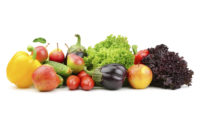The latest wave of culinary innovation is cooking up inspiration and innovation based more on the familiar than the exotic or foreign, according to “New Spins on Standards 2017: Culinary Trend Tracking Series,” produced by Packaged Facts, Rockville, Md.
"One doesn't have to look very far to find the 'next sriracha' or 'matcha tea'," says David Sprinkle, research director. "Culinary trends in 2018 will be inspired by familiar comforts from our childhoods, but with artisanal, indulgent and downright delicious reimaginings that satisfy the appetites of traditionalists and foodies alike."
This report identifies more than a dozen foods, beverages and ingredients that will trend in 2018 and beyond. Here are a few highlights:
Cauliflower at center and side. Thanks to such factors as the growing locavore trend and the increased cost of traditional protein, restaurants are designing more menu items that showcase fresh vegetables. Cauliflower benefits from its versatility, as it can be prepared in many different ways, including global preps such as Indian curries and fritters and Italian pasta.
Eggs Benedict trending across dayparts. Eggs Benedict have inspired newfangled dedicated restaurant concepts. Increased experimentation and multi-culturalism with omelets has opened the door for more Benedict experimentation, especially now that the breakfast, brunch and late night (think breakfast all day) dayparts are getting truly creative attention.
Mac and cheese beyond the box. This comfort food is being adapted and re-adapted into many forms and fancies. Beyond menu presence as a signature entrée or as a premium side dish, mac and cheese is being merchandised as a sociably shareable, Millennial-baiting food plate; as a fried bite-sized snack, bar food or alternative to French fries; and in mash-ups atop sandwiches or poured into poutine.
Meatballs are on a roll. Meatballs have become much more than a spaghetti sidekick. Think of the modern meatball reinvention as a spinoff of the hyper-creative and consumer-welcomed alternative burger trend. Meatballs made of beef, pork, lamb, bison, duck, turkey and even plant proteins such as lentils are definitely trending, and most notably so in fine dining restaurants.
Olives across the board. Although "newer" ingredients such as chiles have generally been capturing more attention, there's at least as much opportunity in renewed focus on olives. For such a small package, olives pack a lot of flavor, versatility and allure. And, the culinary world has been catching on that olives are egalitarian, representing opportunity at every price point in both foodservice and retail.
Better with brown butter. It's hard to go wrong with brown butter, a double-down on comfort food flavor and texture. Name a favorite dessert, and it's probably better with brown butter. Apple pie? Check, including in the crust. Brownies? Check, including the icing. Chocolate chip cookies? In the dough or chips. Pudding? Butterscotch is already there. With ice cream, buttered pecan was already halfway there. And, don't forget the popcorn.
Figuring out figs. Apples are great, berries may be better, but figs just have more going on. In restaurants, the home base has been fine dining, where figs appear in about three out of 10 menus. But, upscale casual dining is where the growth has been, with menu callouts steadily notching up between 2007 and 2017.
(Earl Grey) tea time at dessert. While tea-flavored ice creams are now mass-market, tea as a dessert or drink flavoring remains happy hunting ground for foodies, as illustrated on menus using Earl Grey in artisanal ice creams, crème Anglaise, flavoring syrups and craft sodas and cocktails.


